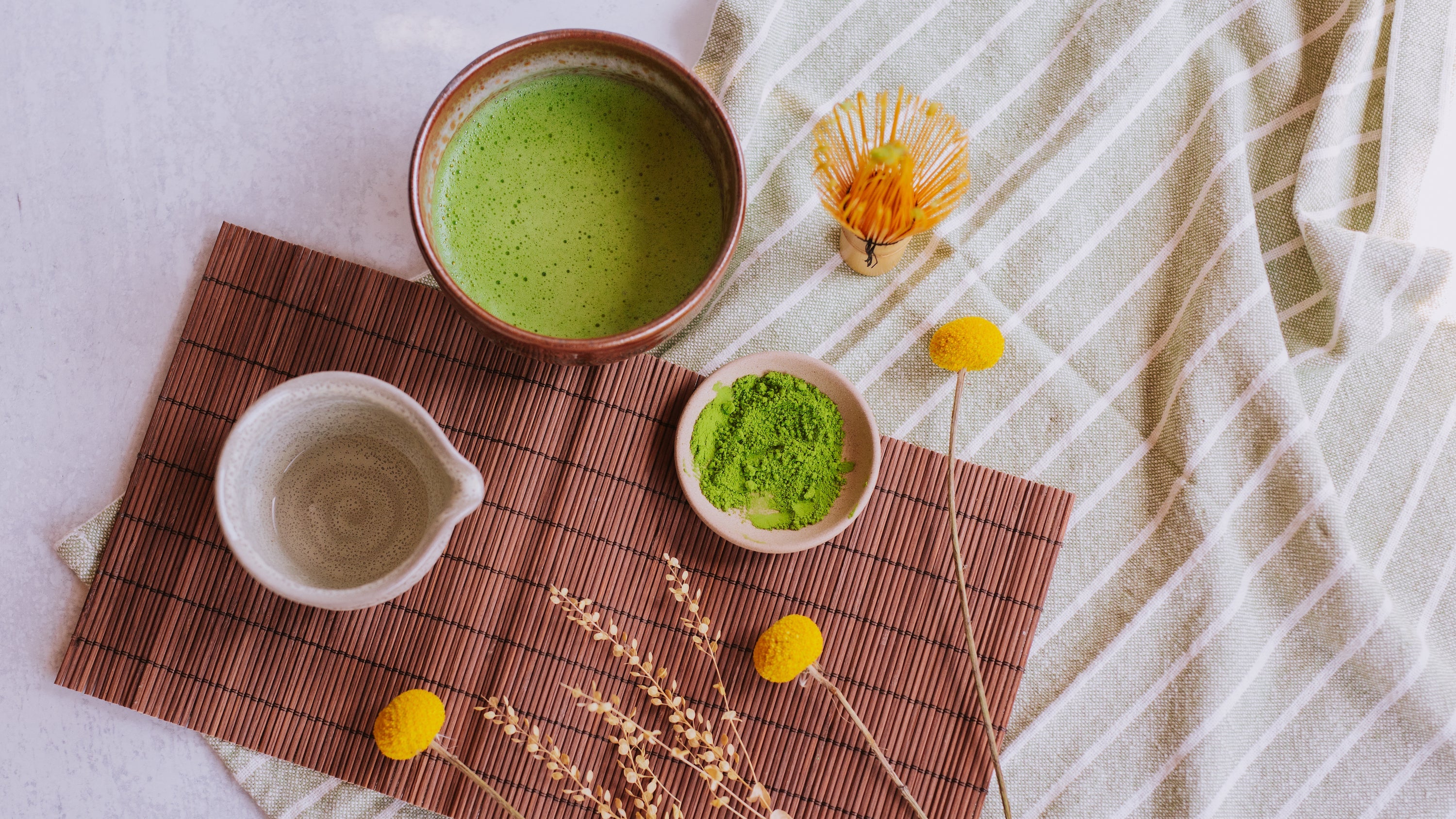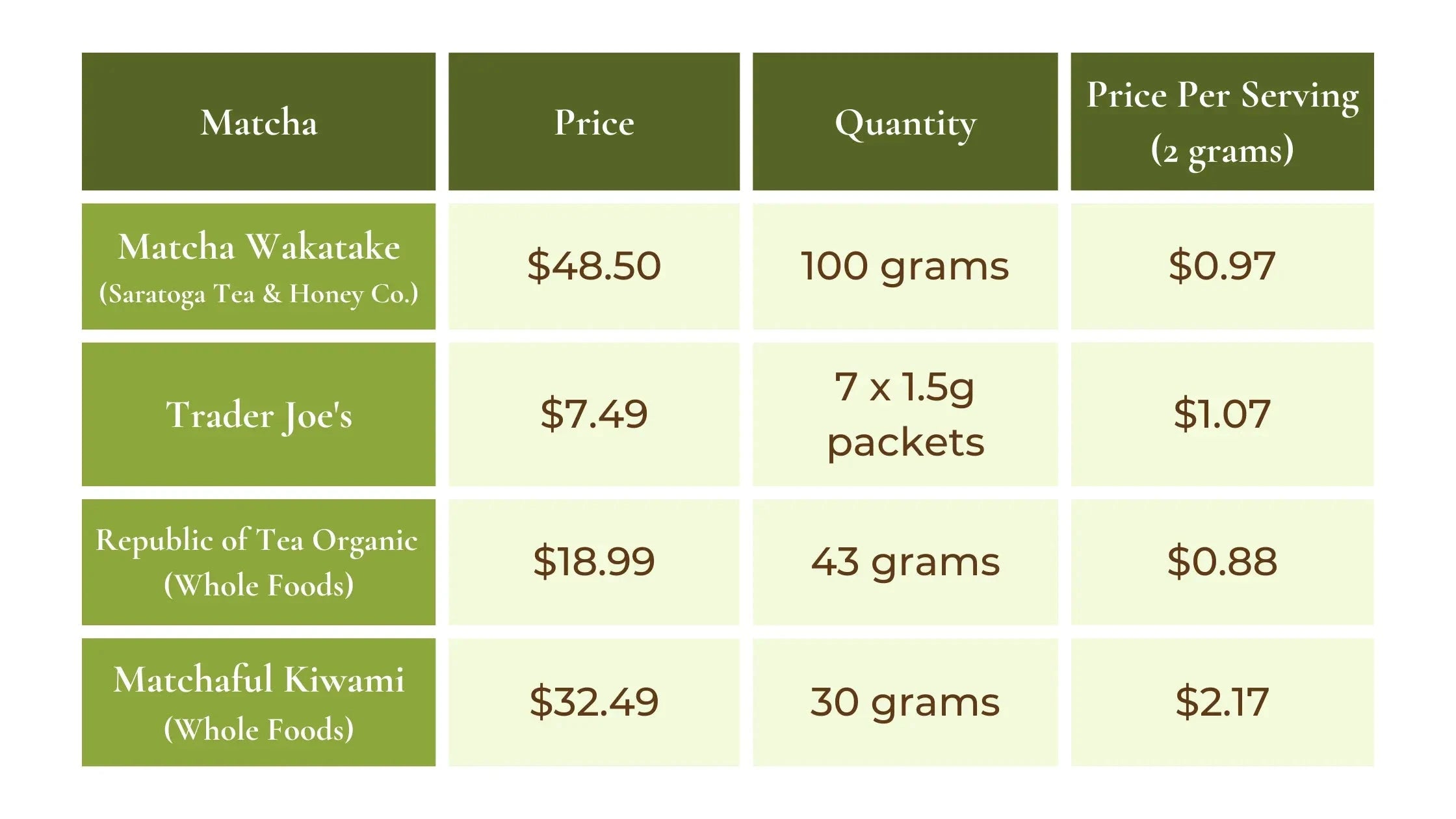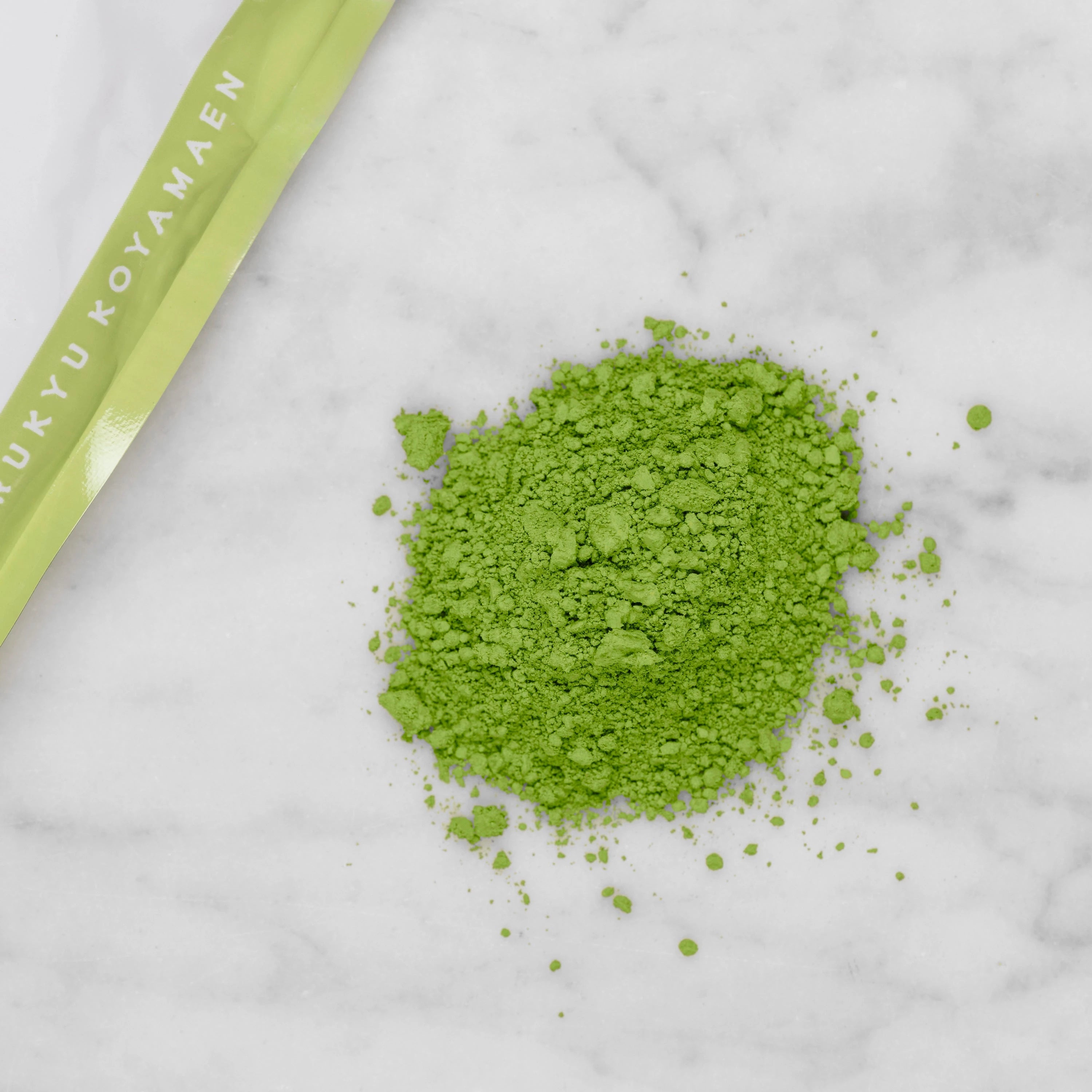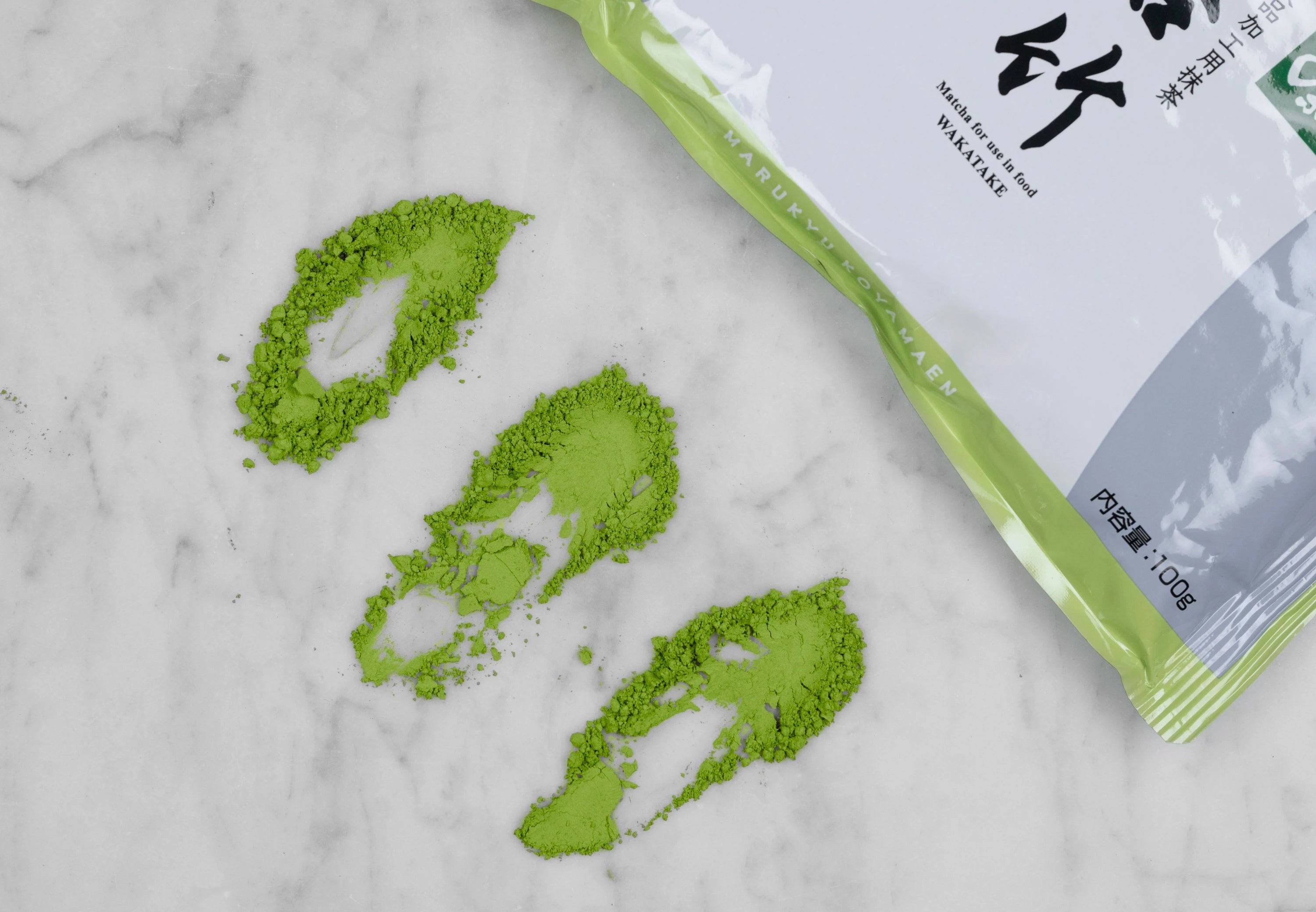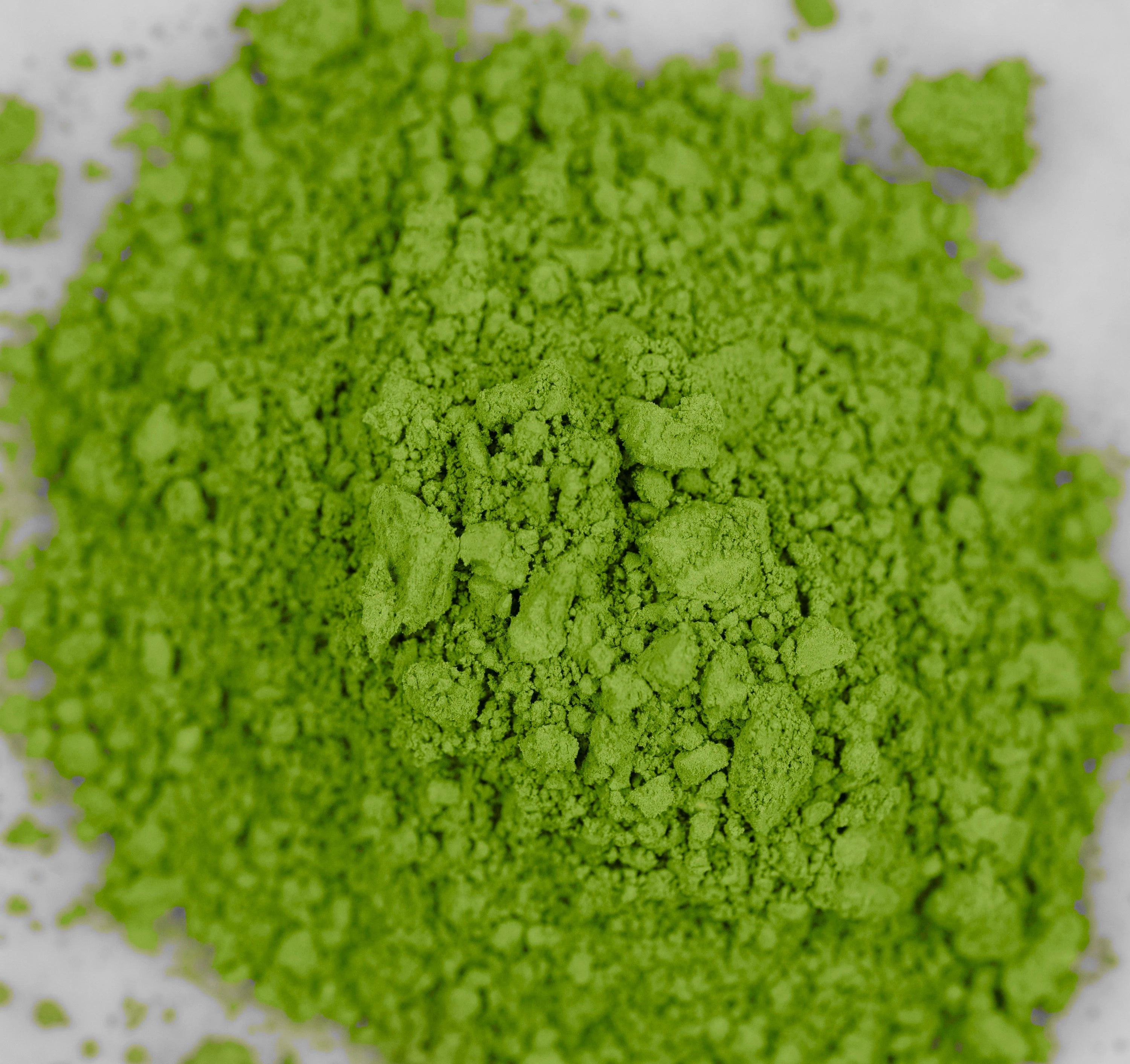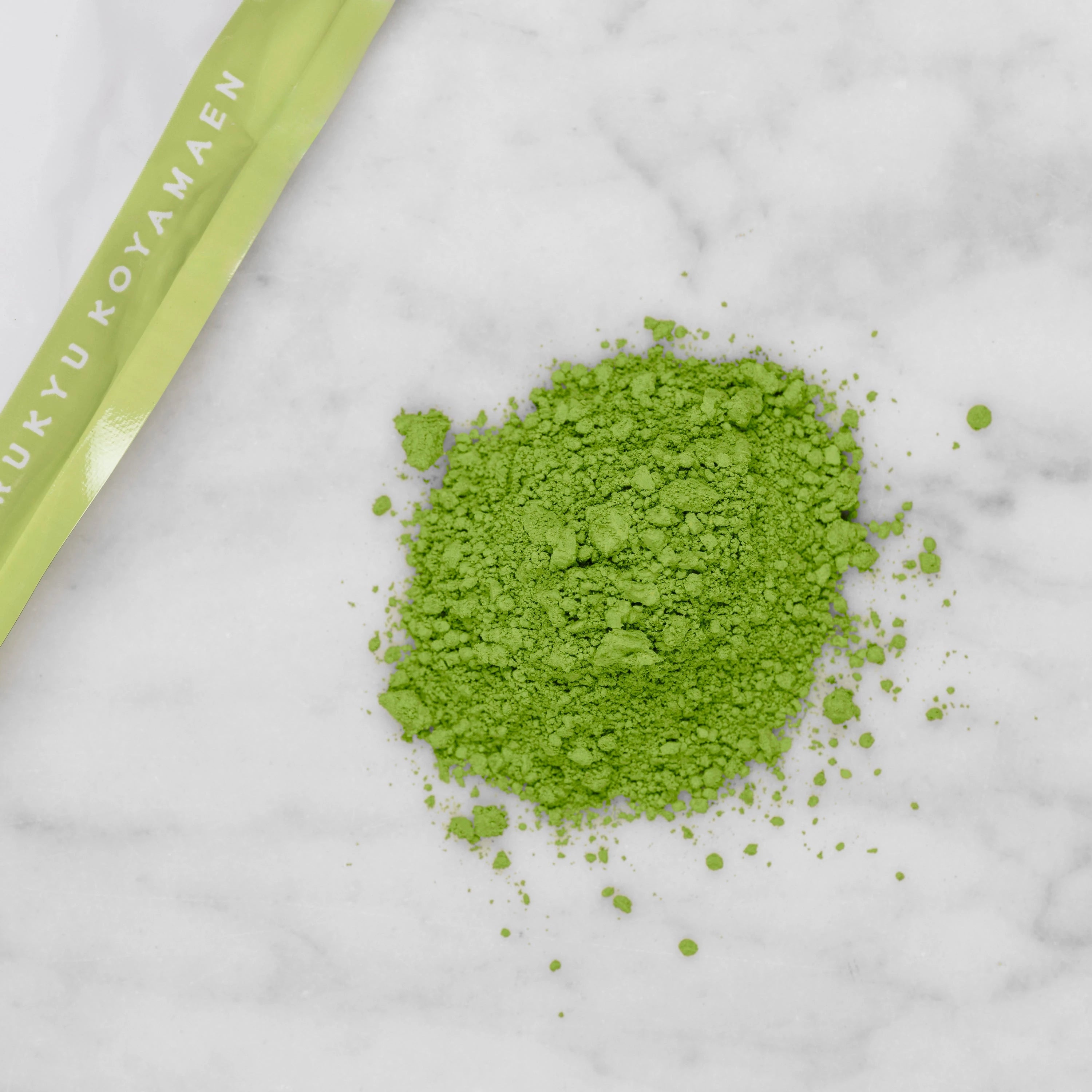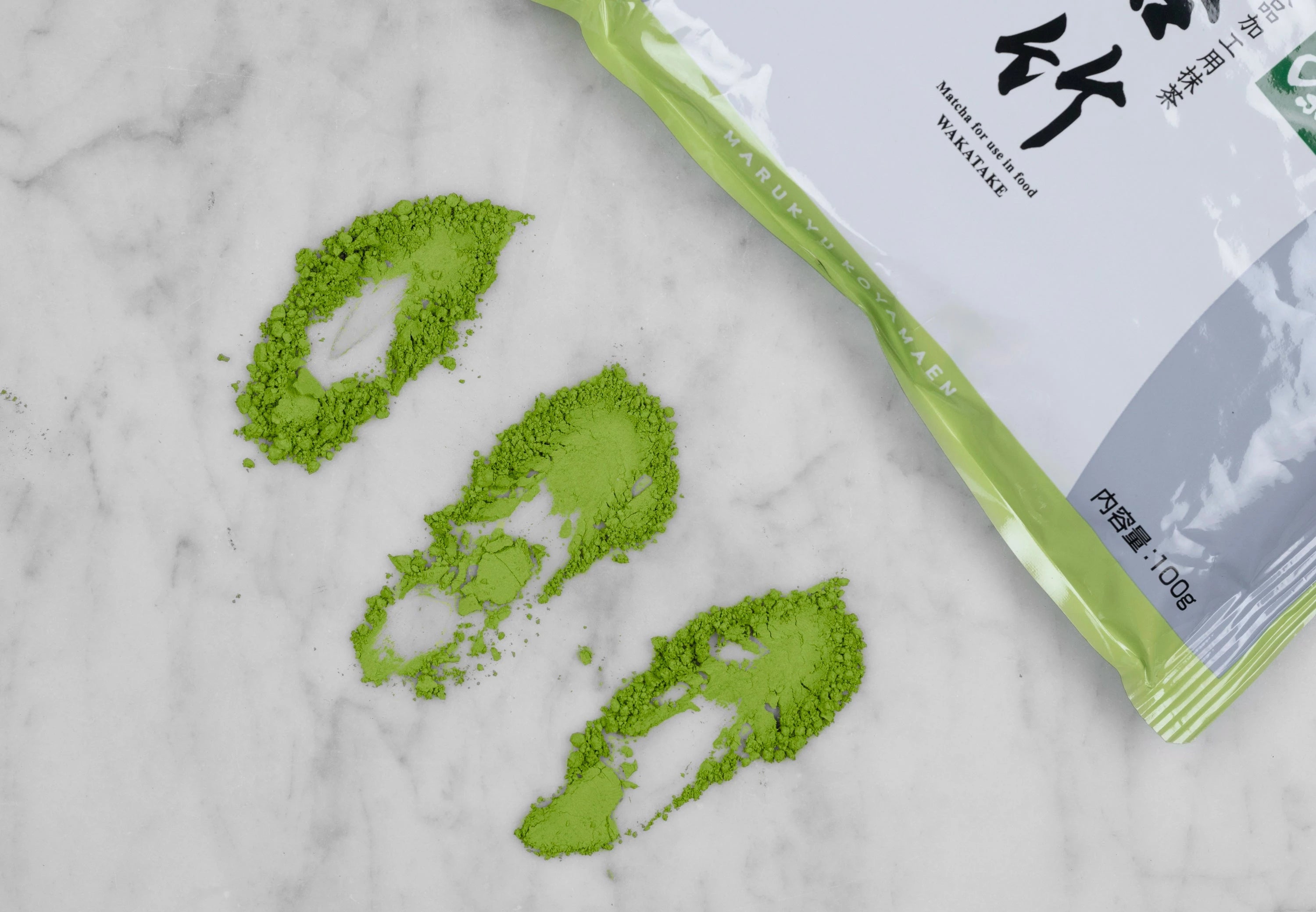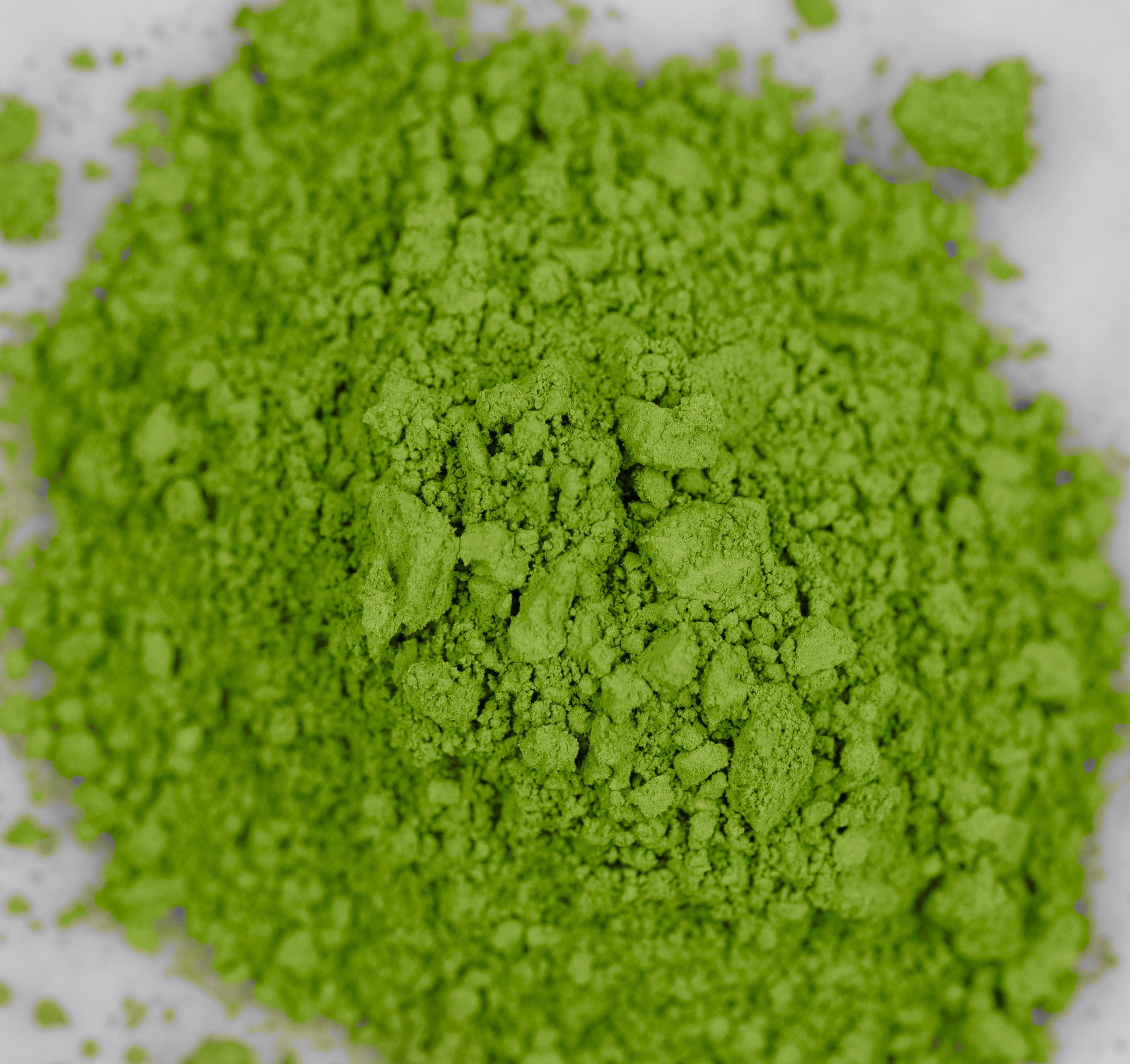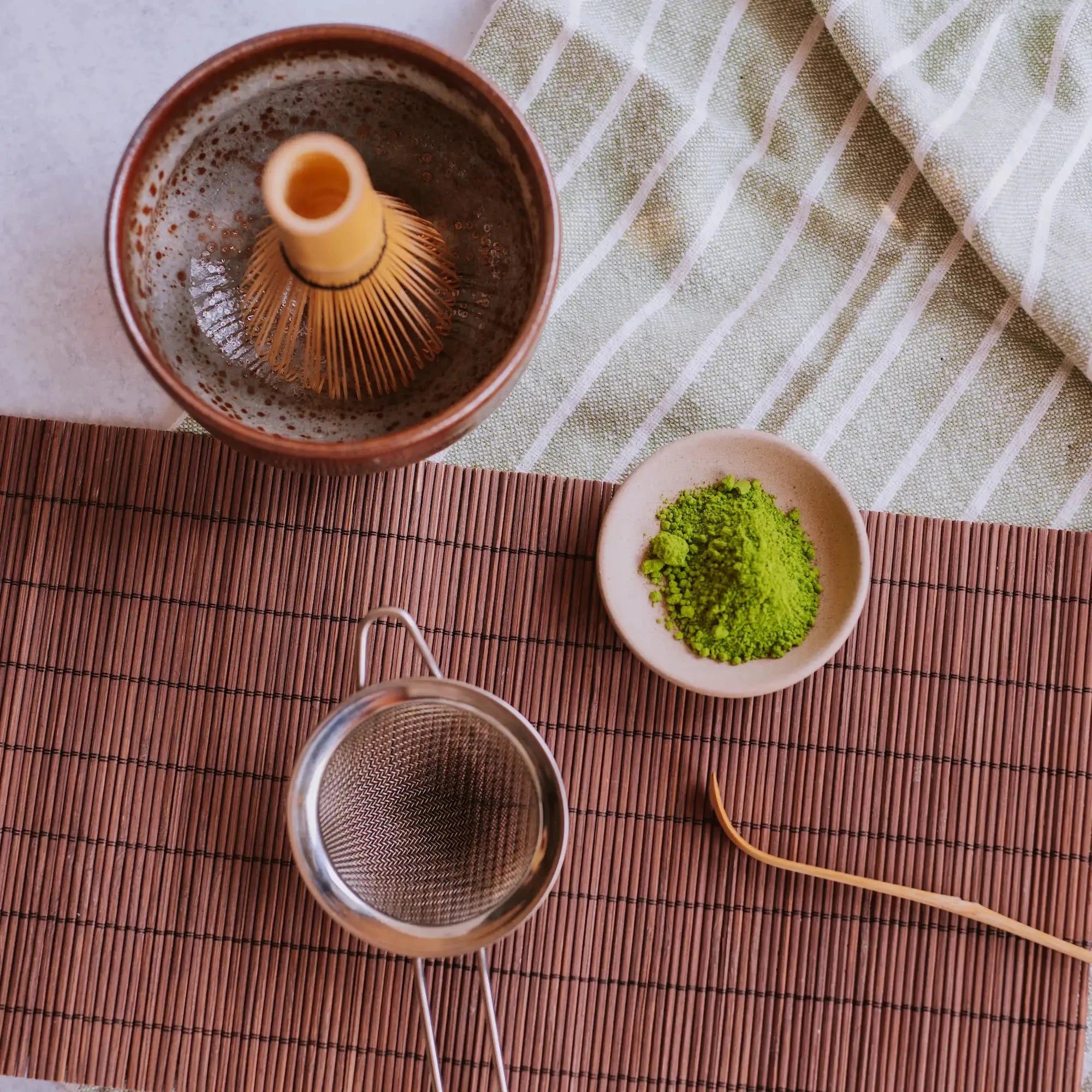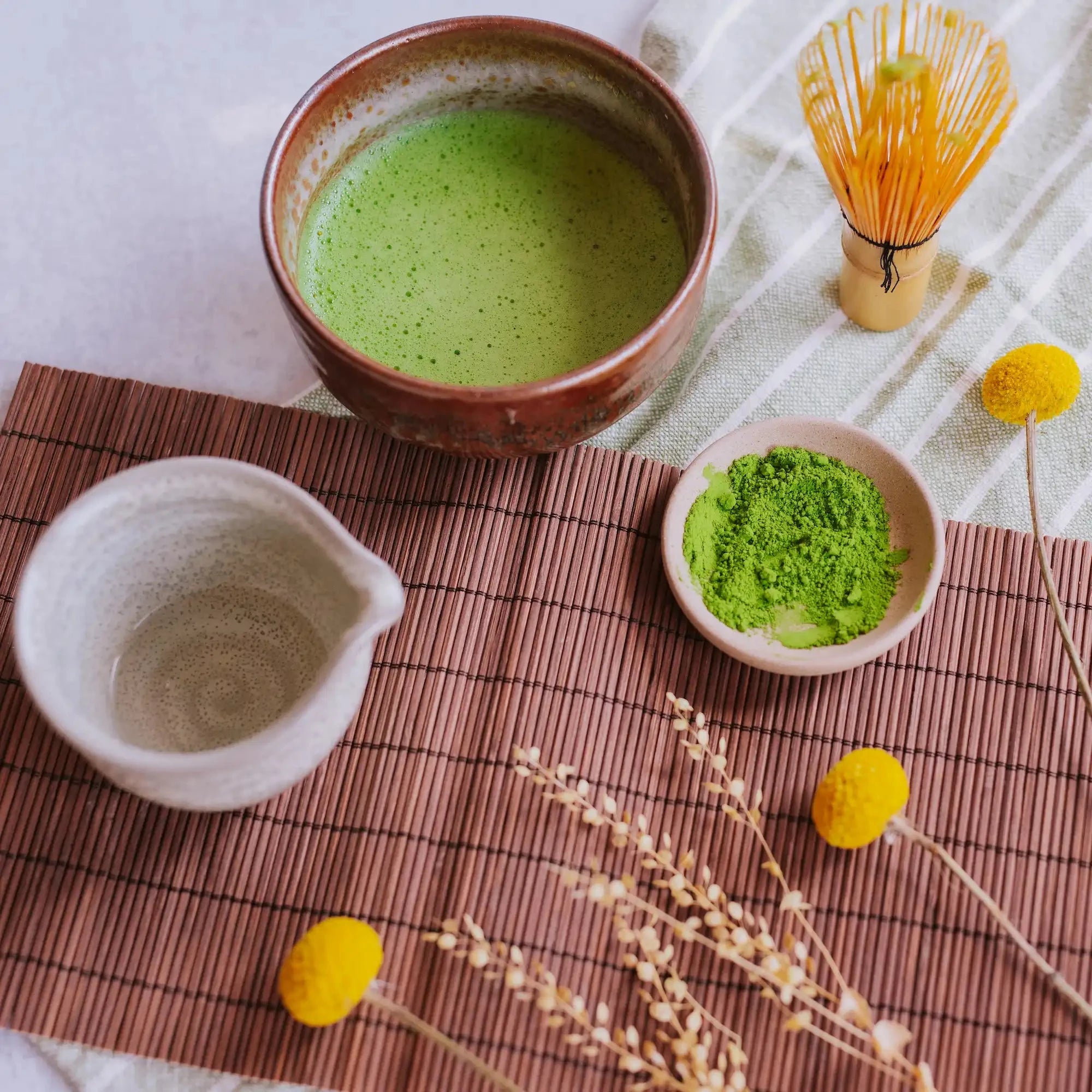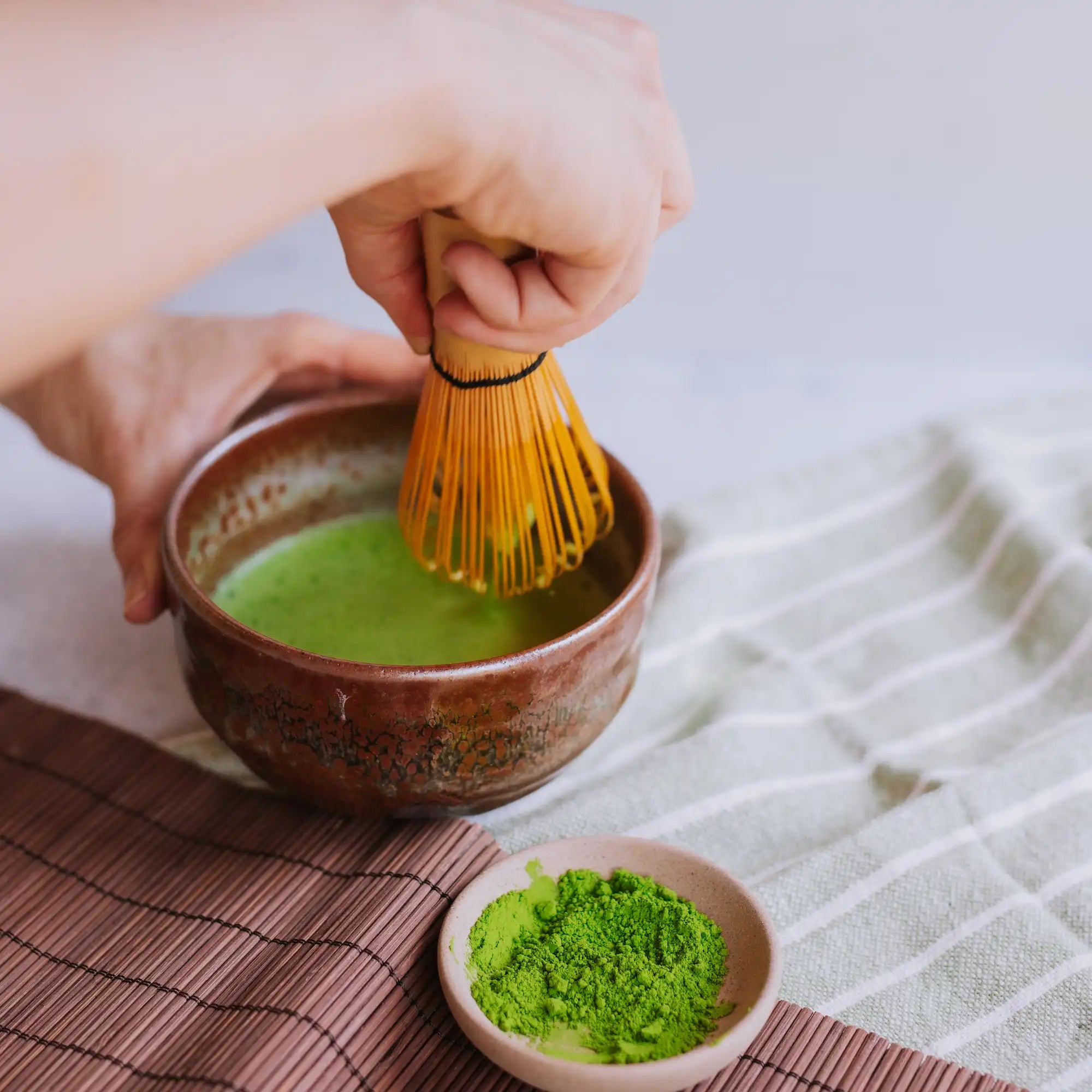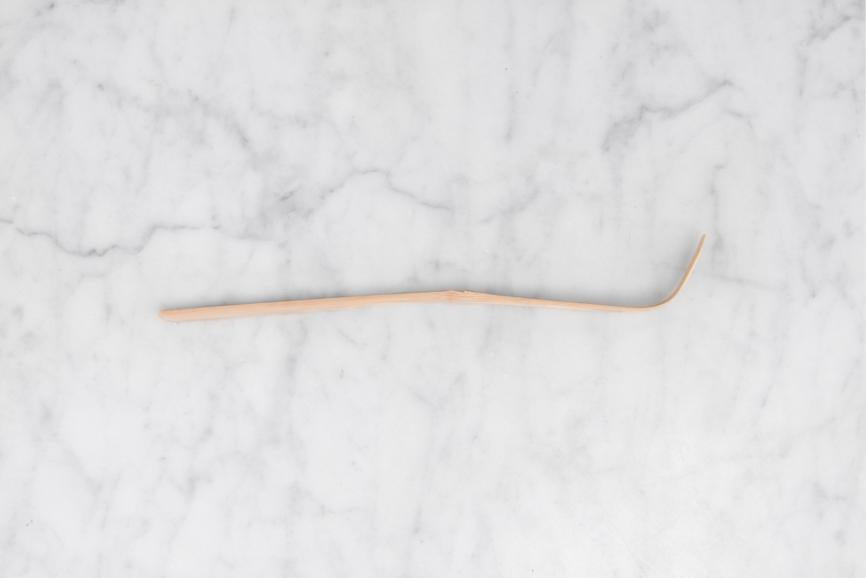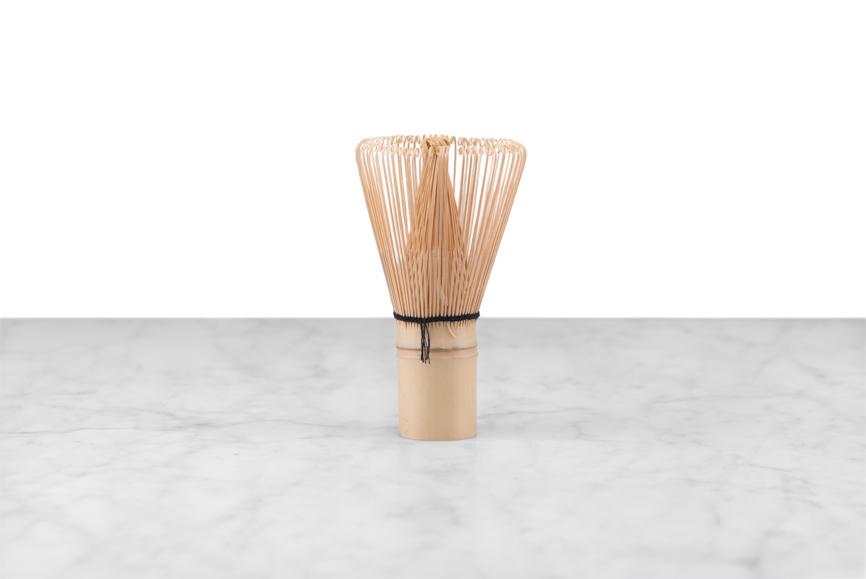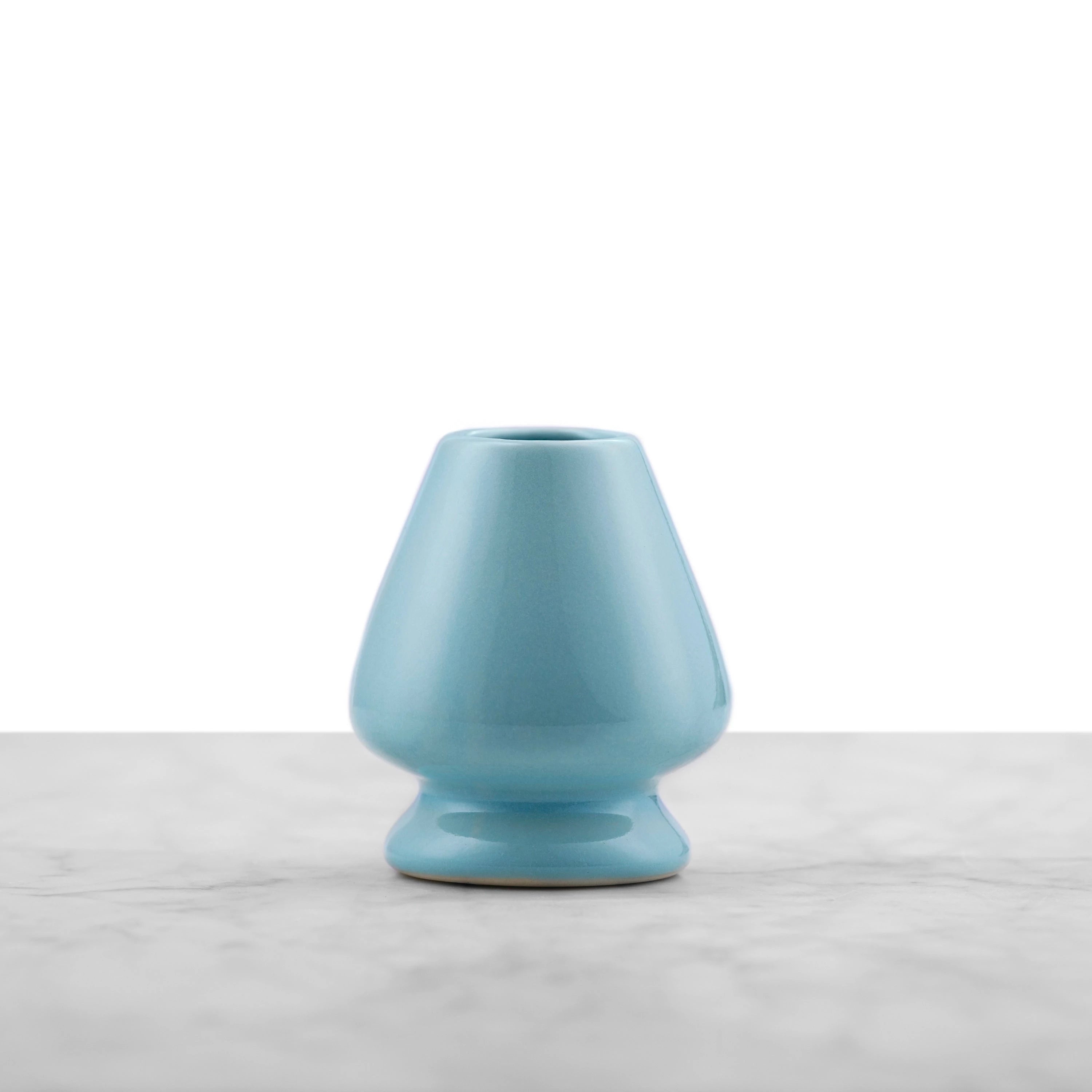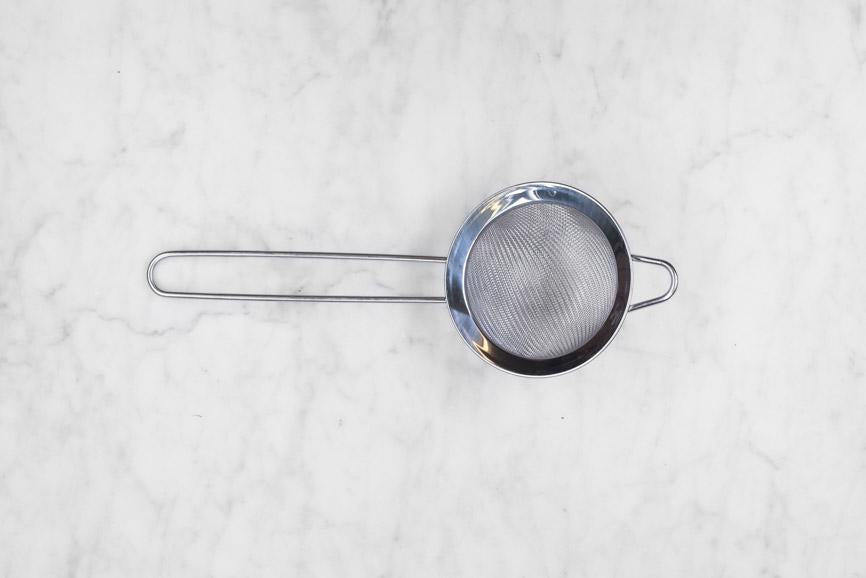Wakatake vs. Grocery Store Matcha
How to Choose Matcha
We put our Matcha Wakatake bowl-to-bowl with matchas from Whole Foods and Trader Joe's. Which ones lived up to the challenge?
Matcha vs. Matcha
The Contenders
As many of you know, we are very proud of our matcha from 8th generation producer Marukyu Koyamaen. While we've covered before what makes a quality matcha and which of our matchas is best for baking, lattes, and ceremonial preparations, we wanted to test how our bar-favorite Matcha Wakatake stacks up against store brands?
To put this to the test, we purchased 3 comparison matchas from Whole Foods and Trader Joe's (we also checked in at Price Chopper and Hannaford, but were unable to find matcha powder at either store). We put our matcha foam-to-foam with Trader Joe's Matcha Green Tea Powder, Republic of Tea Organic Matcha, and Matchaful's Kiwami Single Origin Matcha. Our findings may surprise you, so keep reading for a breakdown of our criteria and our final conclusion!
Matcha v. Matcha
Packaging and Storage

Left to right: Matcha Wakatake, Trader Joe's Matcha, Republic of Tea Organic Matcha, Matchaful Kiwami
Matcha Wakatake | Saratoga Tea & Honey Co.
Our Matcha Wakatake comes in a nitrogen-capped, vacuum sealed tin so the matcha stays as fresh as the day it was ground and packaged until you open it up at home. We store our matcha in the refrigerator and recommend that you do so as soon as you open the cap. The packaging itself is understated and rather unassuming, with mostly Japanese writing, aside from a label stating the producer considers this a culinary matcha.
Matcha Green Tea Powder | Trader Joe's
We found this Matcha in the tea aisle at Trader Joe's hanging off of one of those tabbed strips that act as extra displays between shelves. The packaging itself is all cardboard and inside the matcha packets are foil with lots of air inside. Each box comes with 7 single-serve packets that have 1.5 grams of matcha each. From a tea snob perspective, we weren't impressed with the packaging and don't like the lack of origin information. But we have to give props to TJ's for convenience and the picture of matcha on the outside looks like it has a fine, powdery consistency, even if it's not a terribly bright green.
Republic of Tea Organic Matcha | Whole Foods
This matcha was in the tea section of Whole Foods. Inside the typical Republic of Tea tin, the matcha powder is sealed inside a foil pouch. No excess air, but it also didn't feel vacuum sealed; we thought it was a nice touch that the pouch was resealable after you opened it. That said, to be perfectly honest, the outside of this tin did not inspire confidence. The pictured matcha powder and bowl of whisked matcha are a sort of swampy green color and the bowl of matcha has very little foam with large bubbles. Fresh, quality matcha should be a vibrant green color. It's a bit perplexing to us that they didn't try to make the matcha more appetizing on the packaging (though the why on that may become clear later).
Matchaful Kiwami Super Ceremonial Grade | Whole Foods
We found this matcha on the shelf in the tea section of Whole Foods. Packaged in a small 30 gram tin reminiscent of the tins from our producer, complete with an inner vacuum seal, we don't have any complaints about the physical packaging of this matcha, and we like that they call out the single origin in Shizuoka, Japan. The marketing on the label does give us a bit of a pause, however. We've discussed at length the differences between culinary and ceremonial matcha, and how the word "ceremonial" in the US tends to be linked to perceived quality or health benefits, while in Japan it is an indication of how the matcha should be prepared. So what, then, is a "super ceremonial matcha"?
Packaging & Storage Conclusions
When you're at the store looking for matcha, look less for buzzwords like organic or ceremonial and more for indications of quality: the packaging itself (tins are best!), information about the origin of the matcha, and (if there's a picture) the color of the matcha pictured. Also, don't be ashamed to break out the calculator on your phone and do a comparison of price per serving. What you find out might just surprise you...
Matcha vs. Matcha
Price per Serving
Our recommended serving size for a bowl of hot matcha or shaker of iced matcha is usually 2 grams. At a price per serving level, our Wakatake ($0.97/serving) is only behind the Republic of Tea ($0.88/serving). Even the Trader Joe's very appealing $7.49 matcha comes out as more expensive per serving, especially when you take into account that their single serve packets are only 1.5 grams.
Matcha vs. Matcha
Color, Consistency & Aroma
Fresh, flavorful matcha should be a bright, vibrant green with a sweet, earthy aroma, almost like freshly picked greens. We know matcha should be a brilliant green in color because it is a shade grown green tea, meaning the tea plants had to work hard for sunlight, resulting in extra chlorophyll production. The vibrancy of the matcha indicates that it is fresh (i.e. not oxidized, or browning with exposure to air) and full of chloropyll and other vitamins, minerals, and nutrients. In terms of consistencey, ideally your matcha will be a fine powder with very few clumps.

One chashaku of matcha each (or packet, in the case of Trader Joe's).
As you can see in the photo above, from a color standpoint there is one clear outlier: The Republic of Tea Organic Matcha. While the other three matchas have a nice, bright green color, the Republic of Tea Organic Matcha is much more yellow (to be fair to their marketing, this is accurate to the packaging!). If you're choosing a matcha, this color should be an immediate turn off. It looks neither fresh nor of particularly high quality. It is also quite clumpy and the tin we bought had an unpleasantly fishy aroma (not to be confused with the sometimes pleasing notes of saline that you may get with some high quality matchas!).
There are slight variations in vibrancy among the other three contenders, but objectively they are all bright, vibrant greens. In terms of consistency, we'd put the Matchaful Kiwami in third place. The little balls of matcha you seen in the photo were right there on top of the matcha when we opened the tin, as well as throughout. While not the end of the world, this is definitely a matcha we would recommend sifting first.
The Trader Joe's Matcha and our Matcha Wakatake are a little harder to rank. The Trader Joe's matcha was tapped out of a packet instead of measured with a chashaku, so it looks like it has fewer clumps in the photo, but it's impossible to say if it would have maintained that consistency in different packaging. Additionally, the Matcha Wakatake we used in this comparison was transported in a small bag instead of opening a full 100g tin (waste not, want not, and we refill our bar tin from bulk matcha at the shop to reduce, reuse, recycle!), which may have contributed some static electricity. (If we do this again, we will be more scientific about it!) Again, clumps in your matcha are going to be normal and they are part of the reason we recommend sifting matcha to eliminate the static electricity, but clumps can be annoying when whisking and consuming your matcha, so look for matcha that isn't clumpy from the moment you open the can!
Matcha vs. Matcha
Crema Quality
Since taste is very subjective and doesn't translate well to the page, we decided our final criteria for our matcha comparison would be how well the matchas whisk. There are 3 different schools for whisking matcha and we follow the Urasenke method, which involves vigorous whisking with an untreated bamboo whisk and should result in a thick, tight foam - or crema. With this in mind, we were looking for a matcha that created a beautiful and lush crema with tight bubbles.

Whisked matchas for color and foam comparison.
When whisking the matchas we used a matcha bowl, whisk (chasen), and 195°F water. The bowl was warmed and wiped dry before whisking each matcha. Since many people do not have a small strainer to sift the matcha, we did not sift any of the matchas.
The good: Matcha Wakatake and (surprise!) Trader Joe's. Both of these matchas whisked beautifully with a nice thick foam and tight bubbles. We were pleasantly surprised by the Trader Joe's, though we're still disappointed by the portion sizing and the price per serving.
The underwhelming: Matchaful Kiwami. While the color and aroma were lovely, the clumps made this matcha drop down below Trader Joe's in our rankings. It was difficult to get a tight foam, though we suspect this matcha would perform better when sifted. This is really disappointing to see in a matcha that's over $2/serving and marketed as their best matcha.
The bad: Republic of Tea Organic Matcha. This matcha barely foamed at all with lots of large bubbles and had an unpleasant aroma of brackish water.
Matcha vs. Matcha
The Rankings
Taking everything into account (packaging, price per serving, color, and crema) we would rank buying the matchas we compared as follows:
1. Matcha Wakatake
2. Trader Joe's
3. Matchaful Kiwami
While the Matchaful Kiwami is lovely, the price per serving combined with the clumpy consistency of the matcha knocked it down to third for us. Trader Joe's surprised us (good ol' TJ's!) and is an especially good option for someone looking for less than 10 grams of matcha for a recipe, but we do have a hard time getting past the math of less matcha per serving for more money compared to our Wakatake. (If you're just matcha curious and you live in the Capital Region of New York, skip the Trader Joe's matcha and come in for a matcha to stay or to go at our Tea Bar. It'll be cheaper and come with a side of friendly tea staff to teach you how to make it at home!) The Republic of Tea Organic Matcha didn't make our list because we cannot recommend buying it, even for baking.
Matcha Wakatake 100g Pouch
Ceremonial v. Culinary Grade Matcha
Learn about our different matchas and discover which matcha is right for you!
Everything You Need to Make Matcha
$ 8.00
$ 24.00
$ 11.95


